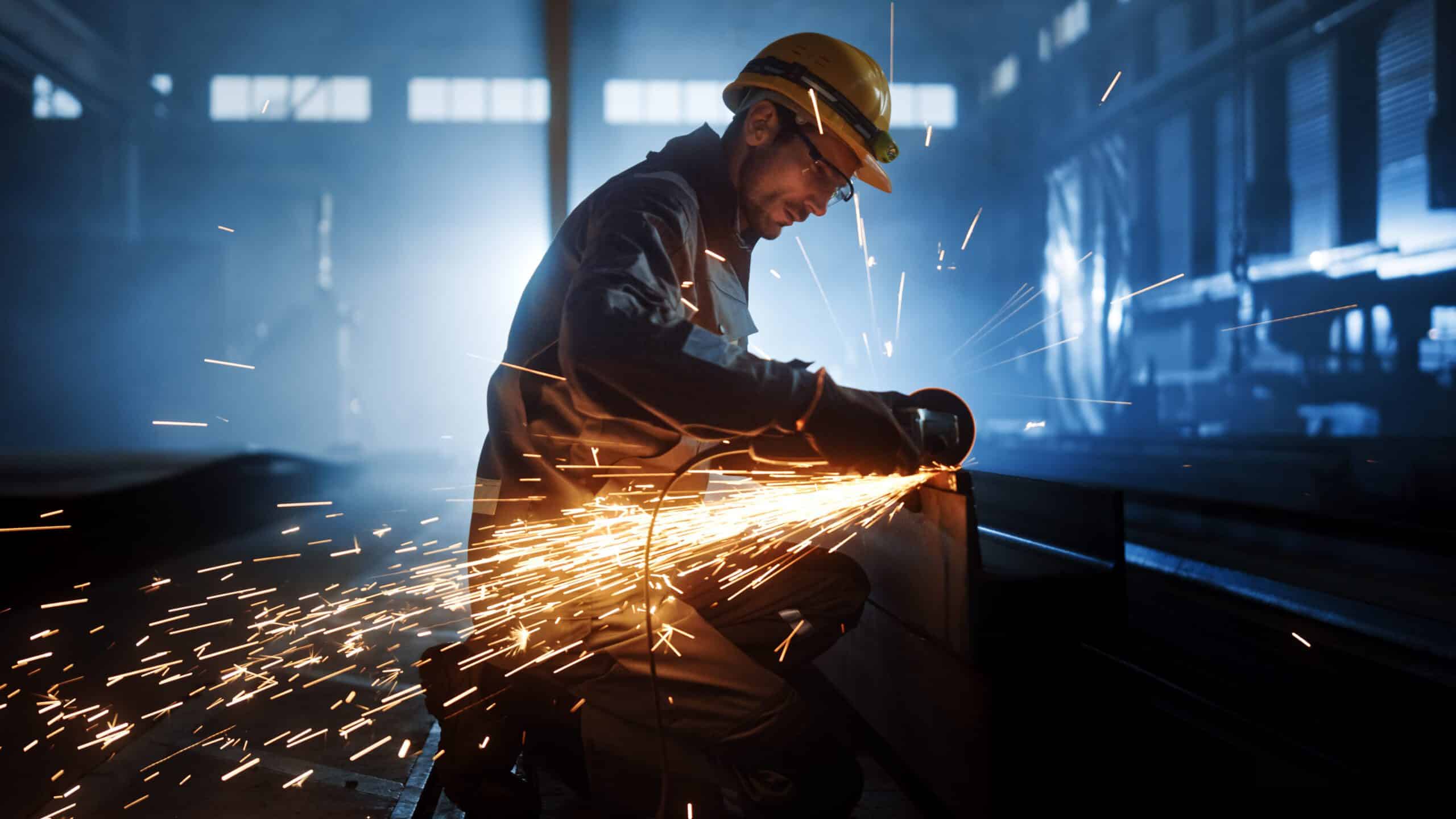In an industry as competitive as manufacturing, staying ahead of the competition requires having the latest machinery. However, such significant investments require substantial financial backing, which isn’t always readily available from traditional revenue streams. The cost often stands as a barrier to entry for newer players and those with cash-flow challenges, but manufacturing equipment loans level the playing field.
These specialized loans are designed to help manufacturing companies acquire the machinery and equipment needed for operational success and growth. Whether purchasing state-of-the-art CNC machines, assembly-line robotics, or upgrading existing equipment to meet higher environmental standards, manufacturing equipment loans provide the financial backing to turn these aspirations into reality.
Yet, navigating the landscape of equipment financing can feel stressful, especially while juggling other day-to-day tasks. With various financing options available, each with its own set of terms, conditions, and eligibility criteria, finding the right loan that matches your business needs requires a thorough understanding and strategic planning.
Overview of Equipment Loans for Manufacturers
Manufacturing equipment loans are specialized financial solutions designed to support manufacturers in purchasing or leasing the machinery needed for their operations. These loans offer immediate liquidity for businesses looking to upgrade existing equipment, expand their production capabilities, or maintain a competitive edge in the market without depleting their cash reserves.
Key Features of Manufacturing Equipment Loans
- Purpose: Specifically aimed at funding the acquisition of manufacturing equipment, including CNC machines, assembly lines, packaging machinery, and more.
- Flexibility: Terms can vary significantly, with repayment schedules adjusted to match the business’s cash flow, thereby minimizing financial strain.
- Loan Amount: Typically, the amount is based on the value of the equipment being financed, often covering up to 100% of the cost.
- Collateral: In many cases, the equipment itself serves as collateral for the loan, which can help secure lower interest rates.
- Interest Rates: Rates vary based on creditworthiness, the lifespan of the equipment, and the lender’s policies but are generally competitive.
Types of Manufacturing Equipment Financing
- Term Loans: Offer a lump sum of cash upfront, with a fixed repayment schedule over a set period.
- Equipment Financing: Allows businesses to break down the total cost of equipment over a longer, more manageable schedule, with the equipment itself serving as collateral.
- SBA Loans: Backed by the Small Business Administration, these loans provide favorable terms for purchasing equipment.
- Lines of Credit: Flexible borrowing options where businesses can draw funds up to a certain limit to cover equipment costs.
Why Consider Manufacturing Equipment Loans?
Manufacturing businesses often face the challenge of keeping up with technological advancements to remain competitive. Investing in the latest equipment can lead to significant improvements in efficiency, product quality, and production capacity. However, such investments require substantial capital. Equipment financing offers a solution by spreading the cost over time, allowing businesses to preserve cash for other operational needs.
The Reason for Equipment Financing in the Manufacturing Industry
In an industry where production capacity and efficiency dictate success, access to the latest manufacturing equipment is non-negotiable. From precision tools to large-scale automation systems, the right machinery can significantly enhance product quality, increase output, and reduce downtime.
However, the high cost of this equipment can be prohibitive for many businesses, especially small to medium-sized enterprises (SMEs), with tighter cash flows.
Why Manufacturers Turn to Equipment Financing
- Upfront Cost Mitigation: Financing allows manufacturers to spread the significant expense of equipment acquisition over time, thereby mitigating the impact on their working capital and cash reserves.
- Technology Advancement: In an era marked by rapid technological advancements, leasing or financing equipment provides a pathway to regularly update machinery without the full cost of ownership.
- Competitive Edge: Staying ahead in the manufacturing industry often requires adopting the latest technologies. Financing makes this possible, enabling businesses to invest in innovation.
- Operational Efficiency: New equipment can lead to more efficient production processes, lower energy costs, and reduced waste, all contributing to a healthier bottom line.
- Risk Management: Equipment financing can include maintenance and repair services, reducing the operational risks associated with equipment failure.
Overcoming Financial Challenges
The journey towards adopting new manufacturing technologies is fraught with financial challenges. Upfront costs can be steep, and for many manufacturers, particularly those still establishing their market presence, these costs can deter investment in necessary equipment upgrades. Equipment financing serves as a bridge over these financial hurdles, ensuring manufacturers can pursue growth without compromising their operational integrity.
Financing Structures Available
- Capital Leases: Ideal for manufacturers intending to purchase equipment at the lease’s end, capital leases offer the dual benefit of usage and eventual ownership.
- Operating Leases: Suited for businesses seeking to use the latest equipment without the intention to buy, operating leases offer flexibility and lower monthly payments.
- Loans: Traditional equipment loans provide manufacturers with the funds to purchase equipment outright, offering the advantage of ownership from the start.
- Lines of Credit: For businesses with varying equipment needs, a line of credit provides flexible borrowing options to meet diverse financing requirements.
Qualifying for Manufacturing Equipment Loans
The path to approval requires understanding the qualification criteria and ensuring your business meets these standards. Here’s what you need to know to enhance your chances of qualifying for a manufacturing equipment loan.
| Qualification | Description |
| Credit Score | Lenders view credit scores of 680 as a strong credit history. This includes both your personal and business credit scores, showcasing responsible credit management and low default risk to lenders. |
| Annual Revenue | Your business’s annual revenue is a key indicator of its financial health and operational stability. Lenders often have minimum revenue requirements to ensure that your business generates enough cash flow to cover loan repayments. |
| Time in Business | Lenders typically prefer a minimum operational period of two years because, statistically, newer businesses are more likely to fail. This requirement demonstrates your business’s market endurance and reliability, which reduces the perceived risk of your business. |
Outside of the three main pillar requirements, businesses should also be aware of the following qualifications:
- Collateral: Many lenders require collateral for manufacturing equipment loans. This could be the equipment itself or other business assets.
- Debt-Service Coverage Ratio (DSCR): Your DSCR should demonstrate the ability to cover loan payments comfortably. A ratio of 1.25 or higher is often preferred.
- Business Plan: A robust business plan detailing the use of funds, expected returns on investment, and overall business growth strategy.
- Industry Experience: Demonstrated experience in the manufacturing sector, which could mitigate lender concerns regarding operational risks.
- Financial Statements: Up-to-date financial statements, including balance sheets, income statements, and cash flow statements, are often required to assess financial health.
- Legal Documents: Documentation such as business licenses, contracts, leases, and any legal agreements pertinent to your business operations.
- Personal Guarantee: For some loans, especially in smaller or newer businesses, lenders might require a personal guarantee from the business owners.
- Profitability: Some lenders, mainly banks and credit unions, may require your business to be profitable for a certain period before applying for the loan.
Evaluating Your Financing Options
Understanding the array of options available is crucial for finding the right fit for your business needs. The landscape of financing solutions is varied, each with its unique advantages and considerations. Let’s delve into the diverse financing options that cater to the manufacturing industry.
| Type of Financing | Description |
| Equipment Financing | Equipment financing is specifically designed for the purchase of new or used machinery. It’s an attractive option because it directly ties the loan to the equipment itself, serving as collateral.
This small yet powerful detail translates into more competitive interest rates and terms because the lender already has a collateralized asset to lower their risk, making it a practical choice for businesses with plans to purchase equipment. |
| Term Loans | Term loans offer a lump sum of cash upfront, with a fixed repayment schedule over a set period. They’re a go-to for manufacturers needing significant capital for various purposes, including equipment purchases.
Term loans are an important part of strategic financial planning in manufacturing because the terms of repayment are clear, and the interest rates may be lower than with other types of loans. |
| Business Lines of Credit | A line of credit provides flexible access to funds up to a specified limit, allowing businesses to draw on the line as needed. This flexibility is ideal for managing cash flow fluctuations or unexpected expenses in manufacturing operations.
Interest is typically charged only on the amount drawn, too, which makes it a cost-effective option for businesses with variable financing needs. |
| Revenue-Based Financing | Revenue-based financing offers lump sum funding like term loans but with a few unique repayment distinctions.
Instead of traditional loan repayment, revenue-based financing repayments are tied to the business’s monthly revenue. This means payments increase with higher revenue and decrease during slower periods, offering a high level of flexibility. |
| Asset-Based Lending | Asset-based lending allows businesses to borrow against their existing assets, such as inventory, accounts receivable, or even the equipment itself.
This option can provide immediate liquidity for manufacturers looking to leverage their current assets for growth without diluting equity. However, it does put any collateralized assets at risk. |
| SBA Loans | SBA loans, backed by the Small Business Administration, offer manufacturing businesses long-term financing options at some of the lowest interest rates.
The application process can be rigorous and time-consuming, but the favorable terms, including lower down payments and extended repayment periods, make SBA loans an attractive option for financing significant equipment investments. |
Frequently Asked Questions
Manufacturing equipment loans are financing options specifically designed for the purchase of new or used manufacturing equipment. These loans provide businesses with the capital needed to invest in machinery that can increase efficiency, productivity, and – ultimately – profitability.
Qualification for a manufacturing equipment loan typically depends on several factors, including credit score, annual revenue, and time in business. Lenders will also consider the equipment’s value and your business plan for its use.
The primary benefits include the ability to purchase or upgrade equipment without depleting cash reserves, potential tax advantages, improved cash flow management, and the opportunity to stay competitive with the latest technology.
Financing equipment typically involves taking a loan to purchase equipment that you’ll own outright at the end of the repayment period. Leasing, however, is more like renting the equipment for a set term, with options to buy, return, or renew the lease at the end.
The approval time can vary significantly between lenders, ranging from a few days to several weeks. Online lenders might offer quicker approval times compared to traditional banks.
Commonly required documents include business and personal tax returns, financial statements, a detailed business plan, and quotes or invoices for the equipment you intend to purchase.
While having a strong credit score improves your chances of approval and better terms, some lenders specialize in bad credit loans. However, expect higher interest rates and more stringent terms.
Some lenders may require a down payment, typically ranging from 10% to 20% of the equipment’s cost. However, terms vary widely between lenders, and some might offer financing without a down payment.
Evaluate lenders based on factors such as interest rates, loan terms, fees, repayment options’ flexibility, and their understanding of the manufacturing industry. It’s also beneficial to read reviews and possibly consult with industry peers.



